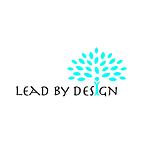Tale of systemic change — by and WITH the community
What do you see in this picture?
A group of 12 Year old, bright young girls in a hostel in Chennai too, saw what most of us see in the above picture. FOOD WASTE rotten away! Until one day they spoke to their cook.
Kaala, as they call her, has been working in their hostel community for over 12 years cooking and serving food for these 12 YO and other children. In all the 12 years, Kaala had one big problem! That children in the hostel were throwing away food. It pained her to see that children did not understand the value of food while her own childhood memories painted a story of many hungry nights.
When these 12 year old girls listened to this story, their resolution towards solving this problem for her emerged. They set out in a journey of exploration of their own — to find out why food was getting wasted in the first place. Their conversations with different people in the hostel, including the wardens, staffs and children themselves led them to a deeper understanding of this age old problem.
In their “Nancy Drew” level sleuthing, these enthusiastic girls found myriad of problems. Untangling the noodle like mess, they identified 4 main problems, each of which were interlinked to one another like pieces of metal in a chain. Lack of awareness, Lack of a system and Lack of easy to use products led to food wastage in this hostel in Chennai.
The fun part began when they searched for solutions to these problems; Intuitively, these young girls went back to their Kaala and the wardens to include their opinion about the solutions. Thus emerged not 1 but 3 solutions that was effectively bringing in a new system to serve food. It included much more than creating awareness. For one thing, it included student volunteer based system in the hostel as a part of food serving structure. It included home-made composting unit, to put up in the hostel. It included grade 4 girls taking charge in creating games and stories about food wastage.
What started as a simple minded question on one afternoon to a Kaala, led to a systemic change in the community — all in all designed by the young girls in the community WITH the community.
What these young girls have proven us without any doubt is the sense of ownership and sense of belonging got revitalized through the whole process. They had to apply what they had learnt, learn new skills on the go, learn how to use the tools to build their own cost effective products! They learnt more than what their text books had asked them to — Planning, team work, adapting to solutions, active listening and the biggest of all, the fun in the learning process.
Imagine, if every community were to solve their own problems?
What would it look like in 2040, if every community is empowered to solve their own challenges and every child in the community is invited to play an active role in real life problem solving?
We not only will develop sustainable solutions and build a sustainable community, we will pave way for children, who are our future generation to be more empathetic, to be critical thinkers, to be problem solvers and most importantly to be sustainable community builders!
In this new year, Let’s take action to bring an education that builds ACTIVE CITIZENSHIP amongst young children!
புதியதோர் உலகம் செய்வோம். வாரீர்!!
We thank dHive labs for providing us with technical support during the projects.
